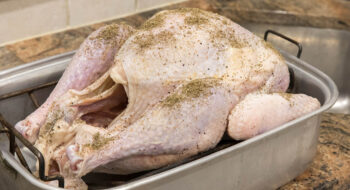Spring may seem a long ways off, but for athletes planning to play spring sports, now is the time to start preparing.
Just ask Dana Woodard, a Tidelands Health Sports Medicine Institute athletic trainer who works with 19 Georgetown County School District sports teams. She is one of several athletic trainers provided by Tidelands Health as part of a broad partnership with the school district. The health system provides physician coverage at each high school football game and offers all of the district’s student-athletes free physicals in the spring and injury clinics in the fall.
Think ahead
The key to minimizing sports injuries when transitioning between seasons is to think ahead, Woodard says. You want to prepare both your body and equipment.
Athletes who rely on their feet, for example, should be thinking about their footwear well before the start of the season.
“The most common thing I deal with is shin splints, which are often caused by athletes wearing old shoes with no support or wearing new shoes that haven’t been broken in,” she says.
The proper fit and style of shoe is important, but it’s also important to wear your new shoes around the house and on a variety of surfaces to help them mold to your feet before you start using them at practices, meets or games, she says.
Acclimatize
If you played a winter sport, start slowly acclimating to the field or playing surface of your spring sport, Woodard says. Transitioning abruptly can be tough on your joints and muscles.
If you didn’t play a winter sport, start training well before the season begins so you can gear up over time. It’s hard on your body to jump into two-hour practices several times a week, she says.
As you prepare for the start of spring sports, and once the season starts, make sure to drink enough water to help ensure you’ll perform your best, she says. If you’re not going to the bathroom every hour or two, that can be a sign you aren’t properly hydrated.
Listen to your body’s sense of thirst. You should be drinking half your body weight in ounces every day, and that doesn’t include what you drink while you’re training or on the field, Woodard says.
So if you weigh 150 pounds, you’re going to need 75 ounces of water per day. You shouldn’t only drink when you’re thirsty or when you’re at practice, and sports drinks shouldn’t represent your entire fluid intake, Woodard advises.
Your urine should be clear, or you’re at increased risk of cramping.
Seek help for injuries
It’s also extremely important to care for your body and watch for signs of injury before and during the season, she says. If at any point you’re concerned you may have suffered an injury, don’t overlook it or try to “play through it.”
Instead, reach out for help. Early intervention can help prevent injuries from becoming more severe.





